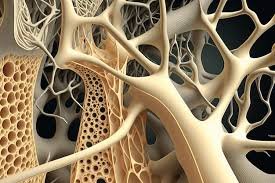Staying strong after 40 is not optional—it’s essential. Start with what you can do, build a routine, and never ignore pain or stiffness.

Shoulder dislocation-A shoulder dislocation occurs when the head of the upper arm bone (humerus) is displaced
from the shoulder socket (glenoid). It's one of the most commonly dislocated joints due to its wide range of
motion and relatively shallow socket.
Direct Impact: Falls, car accidents, or blows to the shoulder.
Sports Injuries: Especially in contact sports (e.g., rugby, football) or sports involving
overhead motions (e.g., volleyball, baseball).
-Repetitive overhead activities can weaken the shoulder joint over time, leading to instability.
-Common in athletes like swimmers, throwers, or gymnasts.
Some individuals have inherently loose ligaments (e.g., Ehlers-Danlos syndrome) that make them more prone to
dislocations.
A history of dislocation increases the risk of recurrence due to ligament and capsule damage.
The humeral head moves forward out of the socket.
Typically caused by a fall with an outstretched arm or forceful external rotation.
The humeral head moves backward.
Often associated with seizures, electric shocks, or direct trauma.
The humeral head moves downward.
Usually results from hyperabduction injuries.
Immobilization: Use a sling to immobilize the joint.
Ice Application: Reduce swelling and pain.
Seek Medical Attention Promptly: Do not attempt to relocate the joint yourself as it may cause
further injury.
Performed by a healthcare professional under sterile conditions:
Techniques like the Hippocratic, Kocher, or Stimson methods.
Sedation or muscle relaxants may be used to ease the process.
Required if closed reduction fails or there is associated fracture or soft tissue injury.
Imaging: X-ray or MRI to confirm proper alignment and check for associated injuries.
mmobilization: I Arm is immobilized in a sling for 1–3 weeks depending on the severity.
Gradual physiotherapy to restore range of motion, strength, and stability.
Exercises include:
Recurrent dislocations.
Significant ligament or labral tears (e.g., Bankart lesion).
Fractures or bone defects (e.g., Hill-Sachs lesion).
Arthroscopic stabilization (e.g., Bankart repair).
Open surgeries like Latarjet procedure.
Strengthening shoulder and rotator cuff muscles.
Avoiding activities that put undue stress on the shoulder.
Proper warm-ups before physical activity.
Wearing protective gear during contact sports.



Copyright © 20November 10, 2024 Dr. kanav's Joint Wellness Clinic . All Right Reserved